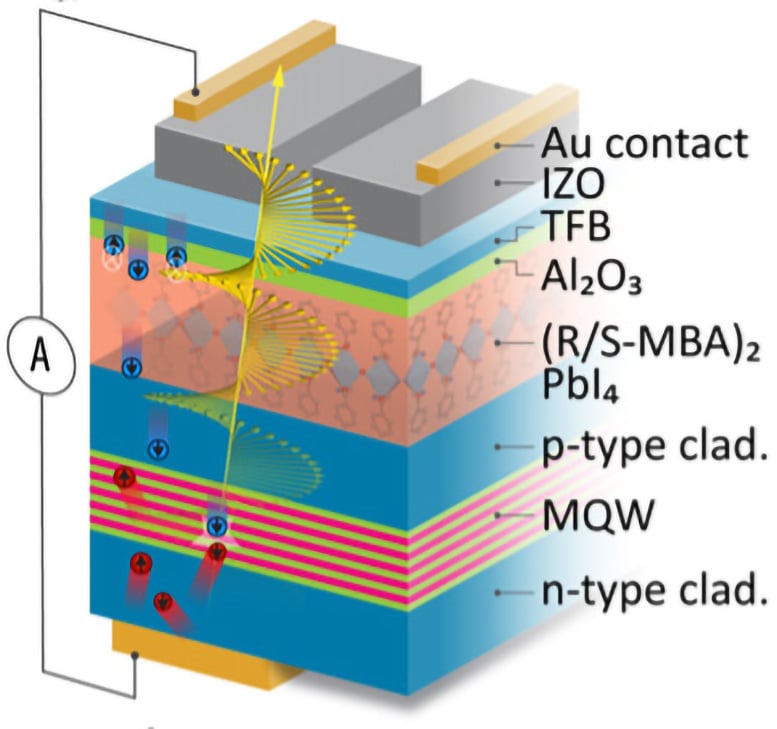
A breakthrough in spintronics has been achieved by modifying LEDs to control electron spin using a new chiral material, enabling more efficient data processing and promising advancements in electronic device capabilities. (Artist’s concert). Credit: SciTechDaily.com
The chiral spin filter, crafted from hybrid organic-inorganic halide perovskite material, allowed conventional LEDs to manipulate the spin orientation of electrons at room temperature without requiring ferromagnets or a magnetic field, overcoming a major barrier to commercial spintronics.
Recent advancements in spintronics have led to the development of modified LEDs that control electron spin without ferromagnets or magnetic fields, using a new spin filter made from chiral hybrid organic-inorganic halide perovskites. This technology, which allows for more efficient data processing by assigning binary values to electron spin states, marks a significant leap forward in integrating spintronics with existing semiconductor technologies.
Traditional electronics use
A major barrier to commercial spintronics is setting and maintaining the electron spin orientation. Most devices tune spin orientation using ferromagnets and magnetic fields, a burdensome and unreliable process. Decades of research have shown that carriers lose their spin orientation moving from materials with high conductivity to low conductivity—for example, from metallic ferromagnets to undoped silicon and conjugated polymer materials that make up most modern semiconductors.
For the first time, scientists transformed existing optoelectronic devices into ones that can control electron spin at room temperature, without a ferromagnet or magnetic field.
Most optoelectronic devices, such as LEDs, only control charge and light but not the spin of the electrons. In a new study led by the University of Utah physicists and researchers at the National Renewable Energy Laboratory (NREL), replaced the electrodes of store-bought LEDs with a patented spin filter, made from hybrid organic-inorganic halide perovskite material. The LEDs produced circularly polarized light, a tell-tale sign that the filter had injected spin-aligned electrons into LED’s existing semiconductor infrastructure, a massive step forward for spintronics technology.

Stack of the spin-LED emitting circularly polarized electroluminescence. The (R-MBA2Pbl) acts as a spin filter, allowing only polarized carriers (blue circles) to flow through the LED and recombine in the multiple quantum wells (MQW)s emitting circularly polarized light (yellow helix). Credit: Hautzinger, M. et al. Nature (2024)
“It’s a miracle. For decades, we’ve been unable to efficiently inject spin-aligned electrons into semiconductors because of the mismatch of metallic ferromagnets and non-magnetic semiconductors,” said Valy Vardeny, Distinguished Professor in the Department of Physics & Astronomy at the U and co-author of the paper. “All kinds of devices that use spin and optoelectronics, like spin-LEDs or magnetic memory, will be thrilled by this discovery.”
The study was recently published in the journal Nature.
Spin filters
In 2021, the same collaborators developed the technology that acts as an active spin filter made of two successive layers of material, called chiral hybrid organic-inorganic halide perovskites. Chirality describes a molecule’s symmetry, where its mirror image cannot be superimposed on itself. Human hands are the classic example; hold yours out, palms facing away. The right and left hands are arranged as mirrors of one another—you can flip your right hand 180° to match the silhouette, but now the right palm is facing you while the left palm faces away. They’re not the same.
Some molecules, such as SciTechDaily